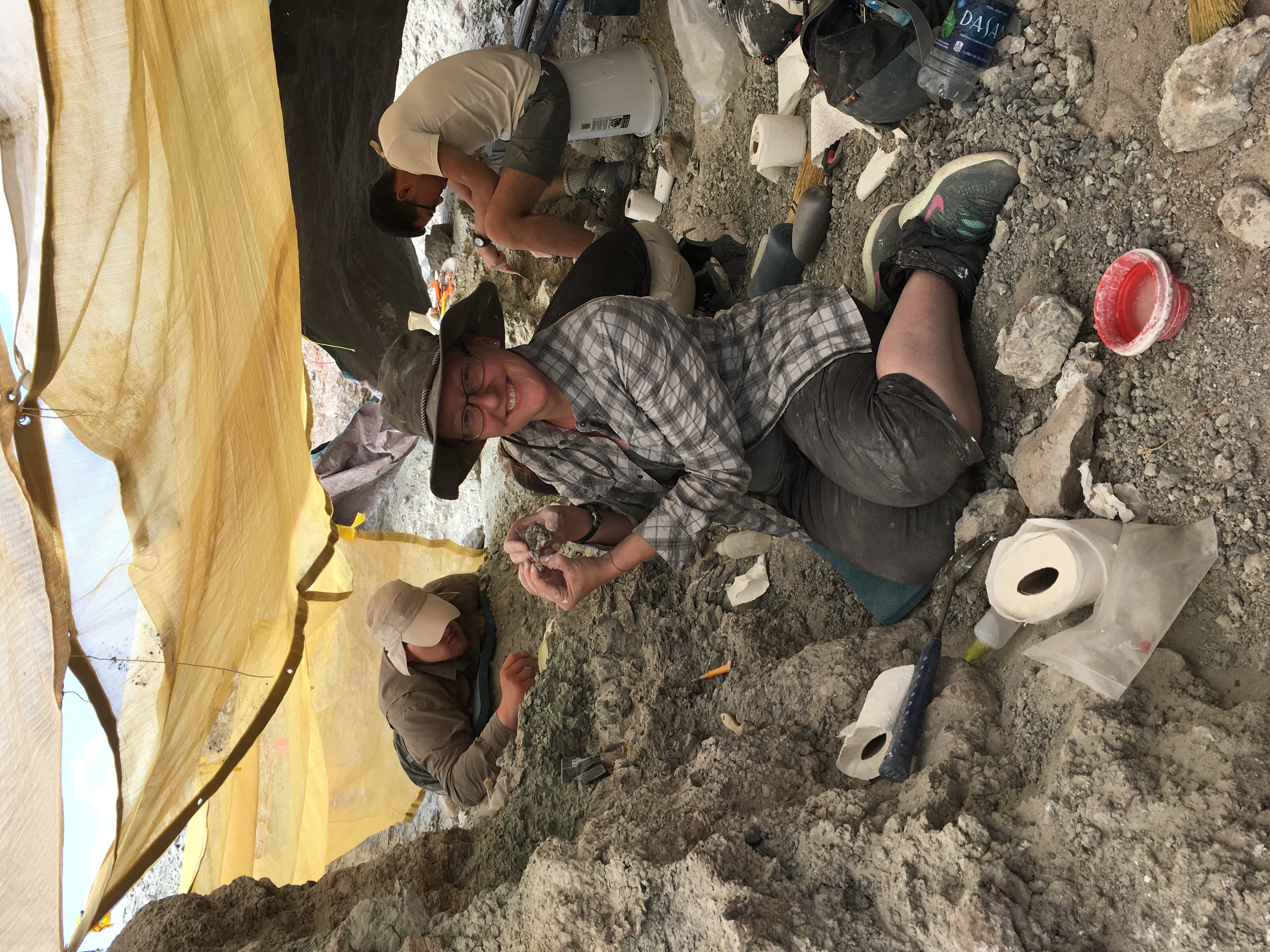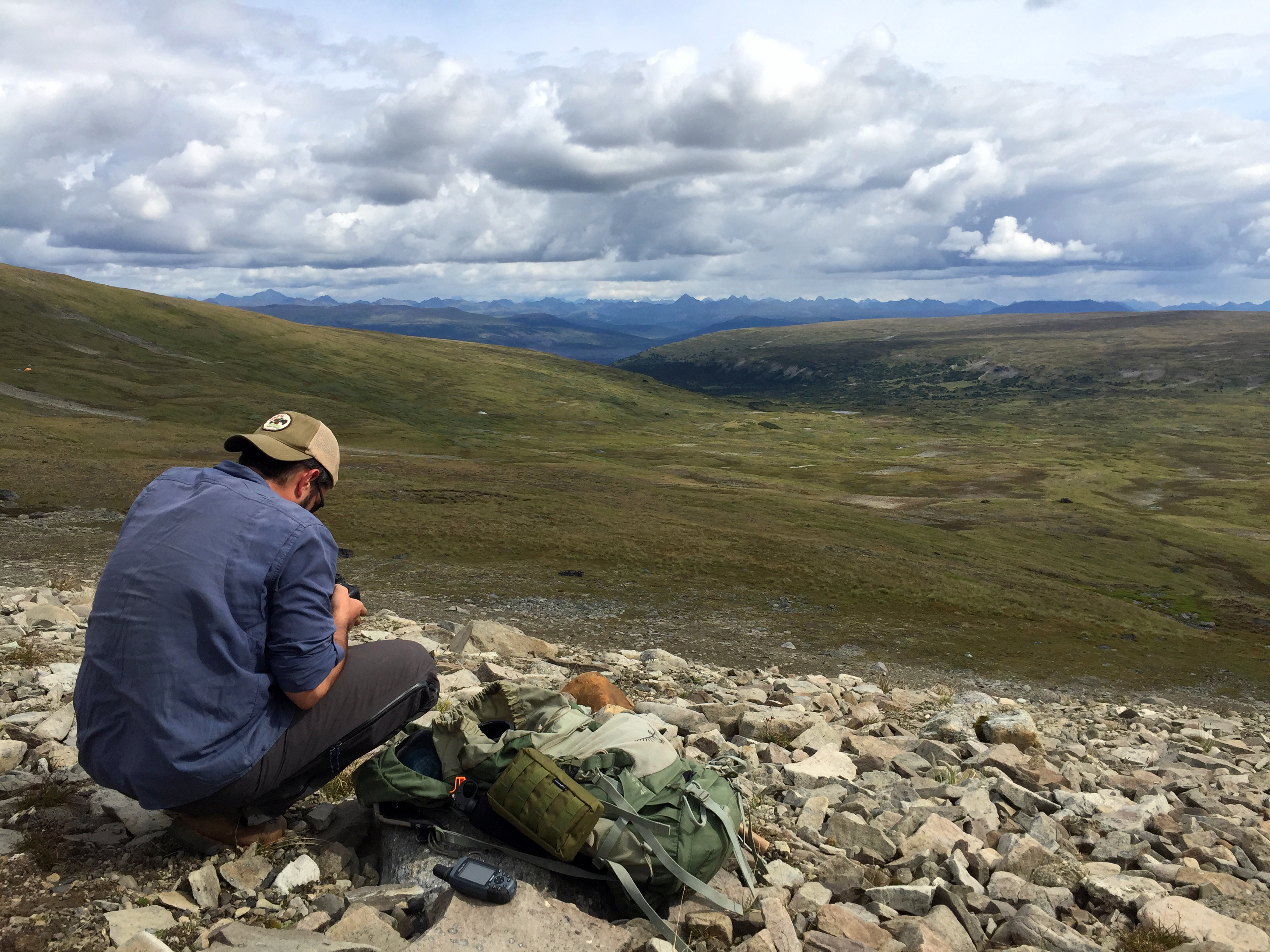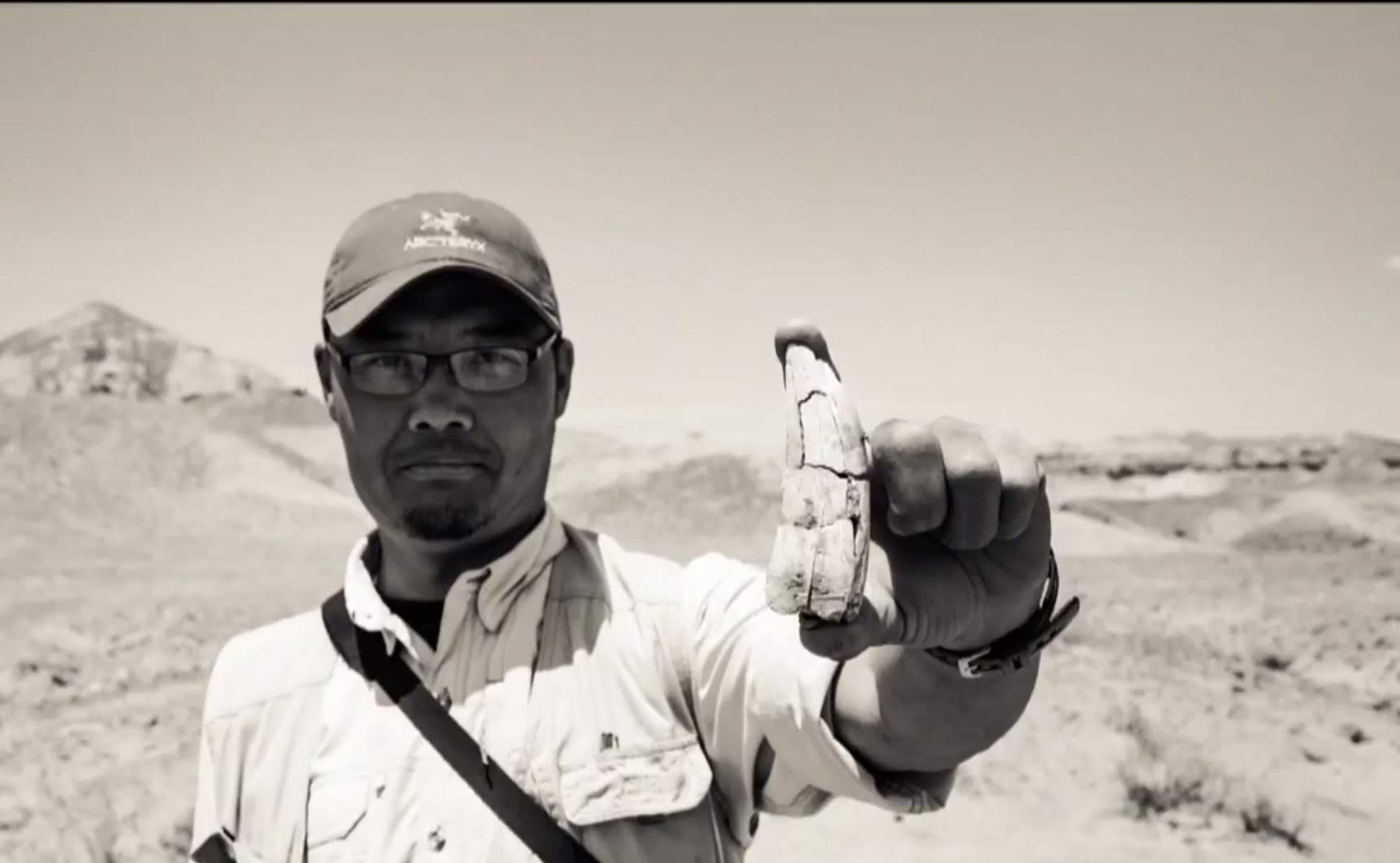
Aurore Canoville
Postdoctoral Research Scholar
Education
- Ph.D. in Paleobiology, University Pierre and Marie Curie & National Museum of Natural History, Paris, France (2010)
- M.SC. in Systematic, Evolution and Paleontology, University Pierre and Marie Curie & National Museum of Natural History, Paris, France (2007)
- B.Sc. in Life Sciences, University Pierre and Marie Curie, Paris, France (2005)
Research Interests
- Avian medullary bone
- Bird evolution
- Theropod dinosaur reproductive biology
- Vertebrate paleobiology
- Bone paleohistology
- Bone microanatomy & lifestyle adaptations
- Paleoecological inferences
- Permo-Triassic tetrapods
Selected Publications
- Canoville A, Schweitzer MH, Zanno LE. 2020. Identifying medullary bone in extinct avemetatarsalians: challenges, implications and perspectives. Philosophical Transactions of the Royal Society B 375:20190133.
- Canoville A, Schweitzer MH, Zanno LE. 2019. Systemic distribution of medullary bone in the avian skeleton: ground truthing criteria for the identification of reproductive tissues in extinct Avemetatarsalia. BMC Evolutionary Biology 19:71.
- Zanno LE, Tucker RT, Canoville A, Avrahami HM, Gates TA, Makovicky PJ. 2019. Diminutive fleet-footed tyrannosauroid narrows the 70-million-year gap in the North American fossil record. Communications Biology 2:64.
- Canoville A, Laurin M, Buffrénil V de. 2018. Quantitative data on bone vascular supply in lissamphibians: comparative and phylogenetic aspects. Zoological Journal of the Linnean Society 182:1.
- Canoville A, Chinsamy A. 2017. Paleoecological implications of the bone microstructure of pareiasaurs (Parareptilia) from the Karoo Basin, South Africa. The Anatomical Record 300(6):1039-1066.
- Canoville A, Buffrénil V de, Laurin M. 2016. Microanatomical diversity of amniote ribs: an exploratory quantitative study. Biological Journal of the Linnean Society, early view at doi: 10.1111/bij.12779.
- Buffrénil V de, Clarac F, Canoville A, Laurin M. 2016. Comparative data on the differentiation and growth of bone ornamentation in gnathostomes (Chordata: Vertebrata). Journal of Morphology, early view at doi: 10.1002/jmor.20525.
- Canoville A, Chinsamy A. 2015. Bone microstructure of the stereospondyl Lydekkerina huxleyi reveals adaptive strategies to the harsh post Permian‐extinction environment. The Anatomical Record 298(7): 1237–1254.
- Canoville A, Thomas DB, Chinsamy A. 2014. Insights into the habitat of Middle Permian pareiasaurs (Parareptilia) from preliminary isotopic analyses. Lethaia 47(2): 266–274.
- Canoville A, Laurin M. 2010. Evolution of humeral microanatomy and lifestyle in amniotes, and some comments on paleobiological inferences. Biological Journal of the Linnean Society, 100(2): 384–406.

Thomas Cullen
Postdoctoral Research Scholar
Education
- Ph.D. in Ecology & Evolutionary Biology, University of Toronto, 2017
- M.Sc. in Earth Sciences, Carleton University, 2012
- B.Sc. in Earth Sciences, Carleton University, 2010
Research Interests
Thomas Cullen is a postdoctoral research scholar at NC Museum of Natural Sciences and NC State University, working with Dr. Lindsay Zanno to develop citizen science programs and perform research on Cretaceous ecosystems and dinosaurs.
Selected Publications
- Cullen, TM., Longstaffe, FJ., Wortmann, UG., Huang, L., Fanti, F., Goodwin, MB., Ryan, MJ., Evans, DC. (2020). Large-scale stable isotope characterization of a Late Cretaceous dinosaur-dominated ecosystem. Geology 48: 546-551. https://doi.org/10.1130/G47399.1 (Featured article & subject of GSA blog)
- Cullen, TM., Simon, DJ., Benner, EKC., Evans, DC. (2020). Morphology and osteohistology of a large-bodied caenagnathid (Theropoda: Oviraptorosauria) from the Hell Creek Formation (Montana): implications for size-based classifications and growth estimation in theropods. Papers in Palaeontology. https://doi.org/10.1002/spp2.1302
- Arbour, VM., Evans, DC., Simon, DJ., Cullen, TM., Braman, D. (2019). Cretaceous flora and fauna of the Sustut Group near the Sustut River, northern British Columbia, Canada. Canadian Journal of Earth Sciences 57(6): 671-680. https://doi.org/10.1139/cjes-2019-0031.
- Cullen, TM., Longstaffe, FJ., Wortmann, UG., Goodwin, MB., Huang, L., and Evans, DC. (2019). Stable isotopic characterization of a coastal floodplain forest community: a case-study for isotopic reconstruction of Mesozoic vertebrate assemblages. Royal Society Open Science 6: 181210. http://dx.doi.org/10.1098/rsos.181210.
- Evans, DC., Cullen, TM., Larson, DW., and Rego, A. (2017). A new species of troodontid theropod (Dinosauria: Maniraptora) from the Horseshoe Canyon Formation (Maastrichtian) of Alberta, Canada. Canadian Journal of Earth Sciences. doi: 10.1139/cjes-2017-0034 (Postprint available on PaleorXiv: https://paleorxiv.org/b8mqe/)

Chinzorig Tsogtbaatar
Postdoctoral Research Scholar
Education
- Ph.D. in Biological Sciences, Graduate School of Science, Hokkaido University, 2019
- M.Sc. in Biological Sciences, National University of Mongolia, 2011
- B.Sc. in Biological Sciences, National University of Mongolia, 2005
Research Interests
After Chinzorig received his B.S., he began his career in the field of Paleontology at the Institute of Paleontology and Geology in Mongolia. One of his primarily researches is a major Late Cretaceous coelurosaurian dinosaur groups, ornithomimosaurs (Theropoda: Ornithomimosauria). His interests in this group are not only focus on the skeletal morphological disparities, variations, phylogeny, distribution and diversity of mainly Asian and North American taxa, but it also interests of understanding a paleoecological and paleobiographical implications of ornithomimosaur dinosaurs in general on the basis of their morpho-anatomical skeletal remains.
Selected Publications
- Tanaka K, Kobayashi Y, Zelenitsky DK, Therrien F, Lee YN, Barsbold R, Kubota K, Lee HJ, Chinzorig T, Idersaikhan D, 2019. Exceptional preservation of a Late Cretaceous dinosaur nesting site from Mongolia reveals colonial nesting behavior in a non-avian theropod. Geology, 47 (9): pp. 843-847 | https://doi.org/10.1130/G46328.1
- Chinzorig et al, 2018. Ornithomimosaurs from the Nemegt Formation of Mongolia: manus morphological variation and diversity. Palaeogeography, Palaeoclimatology, Palaeoecology, 494: pp. 91-100 | https://doi.org/10.1016/j.palaeo.2017.10.031
- Nakajima, J, Kobayashi, Y, Chinzorig, T, Tanaka, T, Takasaki, R, Tsogtbaatar, K, Currie, PJ, Fiorillo, AR, 2018. Dinosaur tracks at the Nemegt locality: Paleobiological and paleoenvironmental implications. Palaeogeography, Palaeoclimatology, Palaeoecology, “The Late Cretaceous Nemegt Ecosystem: Diversity, Ecology, and Geological signature”, 494: pp. 147-159 | https://doi.org/10.1016/j.palaeo.2017.10.026
- Lee YN, Barsbold R, Currie PJ, Kobayashi Y, Lee HJ, Godefroit P, Esçuilliѐ F, Chinzorig T, 2014. Resolving the long-standing enigmas of a giant ornithomimosaur Deinocheirus mirificus. Nature, Vol.515, pp. 257-260, http://doi.org/10.1038/nature13874
- Tsuihiji T, Barsbold R, Watabe M, Tsogtbaatar K, Chinzorig T, Fujiyama Y, Suzuki S, 2014 An exquisitely preserved troodontid theropod with new information on the palatal structure from the Upper Cretaceous Mongolia. Naturwissenschaften, 101(2): pp. 131-142, http://doi.org/10.1007/s00114-014-1143-9

